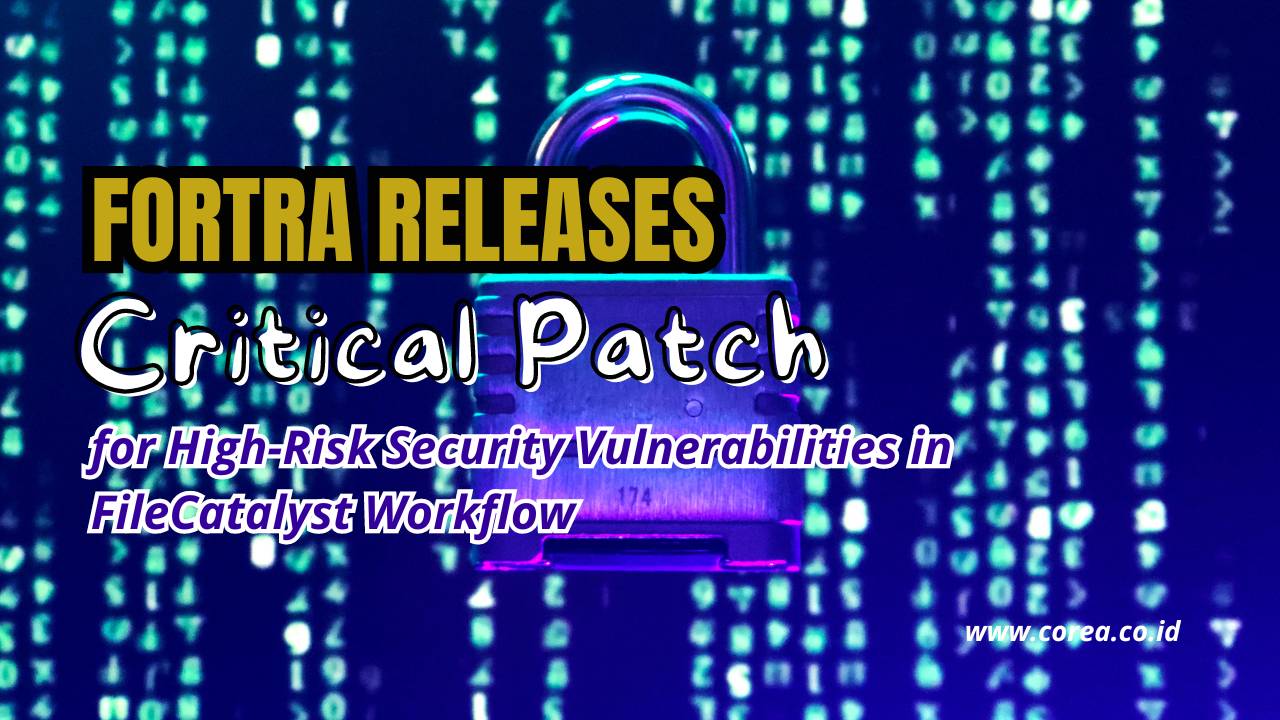In today’s digital age, cybersecurity is a top priority for organizations across the globe. A single vulnerability in your software can open the door to devastating cyberattacks, putting sensitive data at risk. Recently, Fortra, a leading cybersecurity company, identified and addressed critical vulnerabilities in its FileCatalyst Workflow software, which could have allowed remote attackers to gain unauthorized access to systems. This article delves into the details of these vulnerabilities, the risks they pose, and the solutions provided by Fortra to protect your data.
What is FileCatalyst Workflow?
FileCatalyst Workflow is a powerful file transfer solution that enables organizations to automate and manage large-scale file transfers securely. It is widely used in industries such as media, entertainment, and government, where transferring large files quickly and securely is crucial. However, even robust software like FileCatalyst is not immune to security flaws, as demonstrated by the recent discovery of significant vulnerabilities.
The Critical Vulnerability: CVE-2024-6633
The most concerning vulnerability, identified as CVE-2024-6633, received a CVSS (Common Vulnerability Scoring System) score of 9.8, marking it as a high-risk threat. This flaw stems from the use of a static password to connect to an embedded HSQL database (HSQLDB) within FileCatalyst Workflow. A static password means that the same password is used across all instances of the software, which can be easily exploited if discovered.
How the Vulnerability Was Discovered
The cybersecurity company Tenable discovered this vulnerability and reported it to Fortra. They found that the HSQLDB is remotely accessible on TCP port 4406 by default. This accessibility allows a remote attacker to connect to the database using the static password and perform malicious activities, such as adding an admin-level user or modifying existing data.
Potential Impact of CVE-2024-6633
If exploited, this vulnerability could lead to severe consequences, including the compromise of confidentiality, integrity, and availability of the software. An attacker with administrative access could potentially control the FileCatalyst Workflow system, modify files, alter system settings, or even shut down critical operations. The ramifications could be particularly disastrous for organizations relying on FileCatalyst Workflow for secure file transfers.
Fortra’s Response: The Security Patch
Recognizing the severity of the threat, Fortra acted swiftly to address the vulnerability. Following responsible disclosure from Tenable on July 2, 2024, Fortra released a patch for FileCatalyst Workflow version 5.1.7 and later. This patch removes the use of static passwords, securing the connection to the HSQLDB and mitigating the risk of unauthorized access.
How to Apply the Patch
For users of FileCatalyst Workflow, it is imperative to update to version 5.1.7 or later as soon as possible. Fortra has provided detailed instructions on how to apply the patch, which involves downloading the latest version from their official website and following the update process. Users should also review their current database configuration to ensure it aligns with Fortra’s recommendations, which include using an alternative database instead of the embedded HSQLDB for production environments.
Additional Vulnerability: CVE-2024-6632
In addition to CVE-2024-6633, Fortra also addressed another significant vulnerability, CVE-2024-6632, in the same update. This flaw, which received a CVSS score of 7.2, involves a SQL injection vulnerability during the setup process of FileCatalyst Workflow. SQL injection is a type of attack that allows malicious users to execute arbitrary SQL code on a database, potentially leading to unauthorized data access or modification.
Details of CVE-2024-6632
The SQL injection vulnerability occurs when users submit company information during the setup process of FileCatalyst Workflow. The submitted data is incorporated into a database statement without proper input validation. This oversight allows attackers to inject malicious SQL commands into the database, modifying its contents or gaining unauthorized access.
Mitigating SQL Injection Attacks
SQL injection is a common attack vector, but it can be effectively mitigated through proper input validation and the use of parameterized queries. Fortra’s patch for FileCatalyst Workflow version 5.1.7 addresses this issue by enhancing input validation and securing the database interactions during setup. Users are advised to apply the patch promptly to protect against potential SQL injection attacks.
Best Practices for Securing File Transfer Solutions
While applying security patches is essential, organizations should adopt a comprehensive approach to securing their file transfer solutions. Here are some best practices to consider:
- Regular Software Updates: Always keep your software up to date with the latest patches and security fixes provided by the vendor.
- Strong Password Policies: Implement strong, unique passwords for all accounts and avoid using default credentials. Consider using multi-factor authentication (MFA) for added security.
- Database Security: Ensure that your databases are properly configured and secured. Avoid using embedded databases like HSQLDB for production environments unless necessary.
- Network Segmentation: Segment your network to limit access to critical systems and databases. This can help contain potential breaches and minimize their impact.
- Continuous Monitoring: Implement continuous monitoring of your systems for signs of unusual activity or potential security threats.
- Security Awareness Training: Educate your staff about the importance of cybersecurity and the risks associated with common attack vectors like phishing and SQL injection.
The Importance of Responsible Disclosure
The quick response to the discovery of these vulnerabilities highlights the importance of responsible disclosure in the cybersecurity industry. When security researchers like Tenable identify a flaw, they work closely with the affected vendor to ensure that a fix is developed and released before the vulnerability is publicly disclosed. This process helps protect users by reducing the window of opportunity for attackers to exploit the flaw.
The Future of FileCatalyst Workflow Security
As cybersecurity threats continue to evolve, so must the security measures implemented by software vendors. Fortra’s proactive approach to addressing vulnerabilities in FileCatalyst Workflow demonstrates their commitment to maintaining the security of their products. However, users must also play a role in this process by staying informed about potential risks and promptly applying security updates.
Looking ahead, Fortra is likely to continue enhancing the security of FileCatalyst Workflow, incorporating the latest best practices and technologies to protect against emerging threats. Organizations using this software should remain vigilant and ensure they are following recommended security practices to safeguard their data.
In conclusion, the recent discovery of critical vulnerabilities in Fortra’s FileCatalyst Workflow serves as a reminder of the importance of cybersecurity in today’s digital landscape. By understanding the risks posed by these vulnerabilities and applying the necessary patches, organizations can protect themselves against potential cyberattacks. Fortra’s swift response and commitment to security are commendable, but the responsibility also lies with users to maintain a secure environment. By following best practices and staying informed about the latest security developments, you can ensure that your file transfer processes remain safe and secure.
References:
- Fortra Official Advisory
- Tenable Security Research
- CVE Details Database
- Best Practices in Cybersecurity by Industry Experts
- Database Security Guidelines from Leading Authorities



